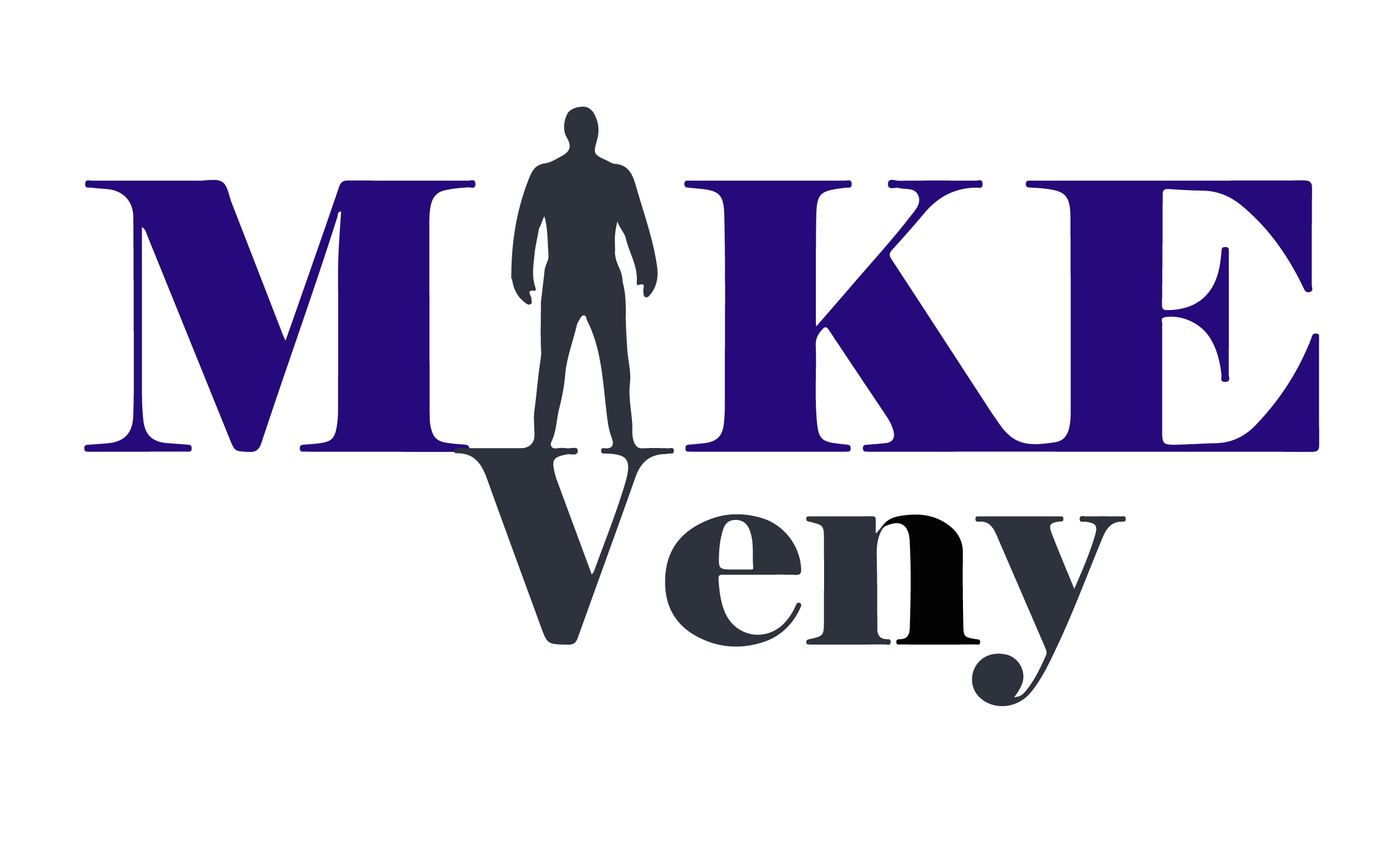As a workplace wellness consultant, I often hear the same questions: Do wellness programs actually work? Are they just a trendy perk? How can companies make them more effective? The truth is, employee wellness training isn’t a passing fad—it’s been around for centuries and has consistently evolved to meet the changing needs of the workforce.
Back in the 1700s, Bernardino Ramazzini’s book Diseases of Workers laid the foundation for understanding occupational health. After World War II, employers faced a crisis as returning soldiers struggled with PTSD and alcohol addiction, forcing companies to take workplace wellness seriously. Fast forward to the COVID-19 pandemic, and employee well-being became a global priority, proving once again that investing in workforce health leads to better business outcomes.
Through my work, I’ve seen firsthand that while wellness starts with the individual, companies play a crucial role. Employees can’t thrive in toxic or unsupportive environments. Organizations have an ethical responsibility to create conditions that support well-being, providing resources that many employees wouldn’t otherwise have access to. When done right, workplace wellness isn’t just an employee benefit—it’s a business strategy that improves productivity, retention, and overall company success.
The numbers don’t lie. For every dollar invested in wellness and mental health programs, businesses see a fourfold return. That’s why 90% of employers are increasing their investment in these initiatives, recognizing them as a key driver of long-term success.
Let’s dive into the data and explore why workplace wellness programs aren’t just beneficial—they’re essential.
Companies get $4 back for every dollar they put into employee wellness training and mental health support. This return has convinced 90% of employers to boost their investment in wellness programs. They now see these programs as vital parts of their business strategy.
The benefits stretch way beyond the reach and influence of just money. Workplace wellness training brings positive changes in many areas. Employees who take part in wellness programs show a 70% boost in productivity. Job satisfaction and work performance jump up by 86%. Companies that put their employees’ wellbeing first see turnover rates drop by 11%.
Let’s look at how top companies run their employee wellness programs. We’ll share success stories and give you practical tips to use in your organization.
The Evolution of Workplace Wellness Programs
Workplace wellness has changed remarkably since the early 20th century. The original focus on occupational safety and health has evolved into programs that address employee wellbeing’s many facets in today’s complex work environments.
From physical health initiatives to integrated wellbeing
The first workplace wellness initiatives emerged in the 1950s-1960s when physician Halbert L. Dunn introduced “high-level wellness” [1]. Dr. John Travis opened the world’s first wellness center in California during the 1970s, which marked a big move in approach [2]. Simple physical health screenings grew to cover multiple aspects of wellbeing.
Modern programs now address four dimensions: physical, mental, social, and spiritual health [3]. This integrated approach shows that complete employee wellness needs attention to all human functions—beyond physical fitness and disease prevention. Programs now merge mental health support, social connections, and activities that encourage purpose and meaning [4].
Why traditional programs don’t deliver results
About 50% of U.S. employers offer wellness programs [1], yet many traditional initiatives fail to deliver meaningful results. Research shows several problems:
- Programs target individual employees but don’t deal very well with workplace environments that lead to health problems [5]
- They depend too much on information or opt-in programs instead of systematic, institutionalized approaches [5]
- Most look at breadth (multiple health topics) rather than depth (detailed strategies for one behavior) [5]
- Many use interventions without scientific proof [5]
- Programs use diagnostics to find disease instead of addressing behavioral mechanisms [5]
Studies show limited participation remains the biggest problem, with less than 30% of employees taking part in traditional wellness offerings [6]. People who don’t participate often say they can make changes on their own (70%) or don’t have time (56%) [7].
Training-focused approaches take center stage
Training-focused wellness approaches have gained ground to overcome these limitations. These newer models tackle systemic workplace issues instead of just treating symptoms. Organizations now lean toward prevention-oriented training programs that give employees lasting skills and knowledge [8].
Modern approaches highlight leadership development because 43% of employees think leadership doesn’t care about wellbeing initiatives [9]. The most successful programs train managers to create psychologically safe environments and handle conflicts effectively [10]. Training now goes beyond personal stress management to reshape job design, organizational culture, and create meaningful system-wide changes [11].
Measuring the ROI of Employee Wellness Training
The numbers prove that workplace wellness initiatives work and deserve investment. Companies now put more money into employee health programs, making it crucial to understand what they get in return.
Healthcare cost reduction metrics
Wellness programs save a lot of money on healthcare spending. Companies save $3.27 in medical costs for every dollar they invest in these programs [12]. Inactive employees cost $1,313 more in yearly healthcare expenses than their active coworkers [13]. Smokers add $2,056 to annual costs per person [13]. Health conditions like obesity and diabetes raise expenses by $2,085 and $2,151 respectively [13].
Johnson & Johnson shows how these savings add up. Their detailed wellness program saved $250 million on healthcare over ten years. Between 2002-2008, they earned $2.71 for every dollar spent [14].
Productivity and performance improvements
The benefits go beyond healthcare savings. More than 90% of business leaders say wellness programs help employee productivity and performance [15]. Google saw productivity jump 12% after starting these programs [16]. Aetna’s employees gained 62 minutes of extra productive time each week through mindfulness and yoga programs. Their stress levels dropped 28% too [16].
Employee retention and recruitment benefits
These programs help companies keep their best talent. 84% of employers say wellness tools boost employee retention [17]. Companies with strong wellness programs see much lower voluntary turnover – just 9% compared to 15% in companies with weaker programs [18]. 91% of employers notice their employees are happier when they offer wellbeing resources [17].
Calculating long-term financial impact
The best results from wellness programs show up over time. Most programs take three to five years to reach their full potential [19]. Top companies with wellness programs spend 16% less on healthcare and see 35% slower cost increases than others [19].
Small companies benefit too. A study of a long-term care company found they saved $1.58 for every dollar they put into their wellness program [20]. This shows that companies of any size can profit from these initiatives.
Case Studies: Real Results from Fortune 500 Companies
Top Fortune 500 companies show how their workplace wellness programs create real benefits through careful planning and tracking. Their success stories are a great way to get knowledge for organizations that want to improve their employee wellness training programs.
Google’s mental health training outcomes
Google puts a strong emphasis on mental health resilience training for employee wellness. The company created short instructional videos (5-6 minutes each) during the pandemic. These videos featured athletes, coaches, and psychologists who helped employees handle stress and build resilience [21]. The program has targeted content about breathing techniques, sleep improvement, and ways to deal with uncertainty authentically [21].
The program quickly gained traction as 30,000 Google employees watched these videos in just one month [21]. Google also runs virtual wellness events, offering 150 sessions about mental health priorities that reached their global workforce [21]. These efforts helped Google bounce back from early pandemic-related productivity drops [21].
Microsoft’s wellness certification program
Microsoft utilizes its own technology, the Viva Insights platform, to boost employee wellness. This analytical approach helps managers learn about work’s effect on team members’ wellbeing while protecting privacy [22]. The platform looks at Microsoft 365 data to suggest useful ways to improve employee productivity and work-life balance [22].
Microsoft keeps improving these wellness tools through their Customer Zero partnership and internal testing [22]. Teams that put these tools in place found that tailored wellness suggestions directly boosted employee confidence and wellbeing [22]. The company also offers detailed wellness benefits that include health programs, fitness classes, and on-site healthcare facilities [23].
Johnson & Johnson’s 30-year wellness journey
Johnson & Johnson started corporate wellness with their “Live for Life” program in 1978. This program stands as the oldest employee wellness initiative in corporate history [2]. Their all-encompassing program gives employees tools to change behavior and teaches them about nutrition, stress management, and physical activity [2].
The results speak volumes. Johnson & Johnson’s employees are much healthier than national averages, with only 9.2% experiencing hypertension compared to 30% nationally [2]. The company saved about $250 million in healthcare costs over ten years. Every dollar invested between 2002-2008 brought back $2.71 [2].
Research on their program revealed that most benefits showed up in years 3 and 4 after starting [24]. Their “Energy for Performance” course graduates had a 25% higher chance of getting promotions and stayed with the company longer. These improvements saved the company an estimated $200 million by 2020 [2].
Success Stories from Small and Medium Businesses
Small and medium-sized businesses face unique challenges with workplace wellness training. Many have found innovative strategies that deliver impressive outcomes without Fortune 500 budgets. These success stories show that effective wellness initiatives are available to companies of any size.
How startups implement effective wellness training
Most startups and small companies don’t have dedicated wellness staff. They usually assign program management to employees who already handle multiple tasks [25]. Successful small businesses start by asking employees about their wellness priorities and needs [26]. This approach helped Rural Wisconsin Health Cooperative, with just 60 employees, achieve a remarkable 90% participation rate [25].
Startups need to identify what their employees truly value. Workplace wellness experts suggest starting small. This allows businesses to build momentum before expanding. Companies succeed when they create clear communication channels for wellness initiatives and their leaders actively participate [11].
Budget-friendly approaches with most important returns
Small businesses are finding affordable wellness solutions that yield substantial benefits. They focus on high-impact, low-cost activities to maximize their limited investments. Walking meetings, healthy food potlucks, and team fitness challenges work well [10].
Many small companies team up with local fitness centers to get corporate discounts instead of building expensive on-site facilities [27]. Others utilize free resources like wellness apps, community running events, or employee-led fitness sessions [28].
Even modest investments can bring substantial financial returns. Well-structured wellness programs save approximately $1.58 for every dollar invested in small-business settings [29].
Industry-specific wellness training adaptations
The best wellness programs recognize that workforces have different needs based on industry and employee demographics. Lincoln Industries, a manufacturing company, tailored their program to their specific workforce. They saw blood pressure reductions of 10 points diastolic and 20 points systolic after three years [25].
Borislow Insurance, a small brokerage firm, shaped their wellness approach to fit the financial services industry. Their program improved employee health and established them as trusted wellness advisors to clients [25]. Their success came from practicing what they recommended to others.
Custom approaches help employees with industry-specific challenges. This works well for both sedentary office workers and physically active field staff [30]. Small-business wellness programs succeed when they stay flexible and relevant to their unique workforce.
Conclusion
Business success and employee wellness training go hand in hand, with results that speak volumes in organizations of all sizes. Companies that invest in wellness initiatives earn $4 for every dollar spent. These programs boost efficiency, keep employees longer, and create a happier workplace.
Look at industry leaders like Johnson & Johnson and Google. Their wellness programs show lasting value through lower healthcare costs and more engaged teams. Even smaller companies achieve great results with budget-friendly programs tailored to their team’s needs.
Success comes when companies move beyond basic wellness offerings. The most effective programs take an integrated approach to physical, mental, social, and spiritual wellbeing. Organizations that adopt this strategy see better health metrics among employees and save money consistently.
Want to reshape your company’s wellness approach? Our training shows you how to build an effective workplace wellness program. A well-designed wellness strategy proves to be a smart investment for your organization’s future, whether you run a Fortune 500 company or a small business.
FAQs
Q1. How do employee wellness programs impact business performance?
Employee wellness programs have a significant positive impact on business performance. They lead to improved productivity, with 90% of business leaders confirming that wellness initiatives positively affect employee productivity and performance. Additionally, these programs result in reduced healthcare costs, increased employee retention, and higher job satisfaction.
Q2. What is the return on investment for employee wellness training?
The return on investment for employee wellness training is substantial. Organizations typically see a $4 return for every dollar invested in employee wellness and mental health support. This ROI is reflected in reduced healthcare costs, increased productivity, and improved employee retention rates.
Q3. How are large companies implementing successful wellness programs?
Large companies are implementing successful wellness programs through comprehensive approaches. For example, Google focuses on mental health resilience training with short instructional videos and virtual wellness events. Microsoft uses data-driven insights to provide personalized wellness recommendations, while Johnson & Johnson’s long-running program addresses multiple dimensions of employee health, resulting in significant cost savings and improved health metrics.
Q4. Can small businesses benefit from wellness programs?
Yes, small businesses can definitely benefit from wellness programs. By implementing budget-friendly approaches and focusing on high-impact, low-cost activities, small companies have achieved impressive results. These include partnering with local fitness centers, leveraging free wellness resources, and customizing programs to address industry-specific challenges.
Q5. How long does it take to see results from employee wellness programs?
The full value of wellness programs typically materializes over time. It generally takes three to five years for these initiatives to realize their maximum impact. However, some benefits can be observed sooner, with improvements in employee engagement, productivity, and health metrics often becoming apparent within the first year of implementation.
References
[1] – https://pmc.ncbi.nlm.nih.gov/articles/PMC4945172/
[2] – https://www.jnj.com/innovation/how-johnson-johnson-is-improving-workplace-wellness-for-healthiest-employees
[3] – https://www.mckinsey.com/mhi/our-insights/thriving-workplaces-how-employers-can-improve-productivity-and-change-lives
[4] – https://www.shrm.org/in/topics-tools/news/blogs/decoding-the-shift-to-holistic-wellness-programs-in-organization
[5] – https://pmc.ncbi.nlm.nih.gov/articles/PMC6598150/
[6] – https://hrtechcube.com/why-traditional-wellness-programs-are-failing/
[7] – https://www.shrm.org/topics-tools/news/benefits-compensation/employees-participate-or-dont-in-wellness-programs
[8] – https://www2.deloitte.com/us/en/insights/multimedia/podcasts/the-problem-with-employee-wellness-programs.html
[9] – https://www.wellics.com/blog/why-employee-wellbeing-programs-fail
[10] – https://aleragroup.com/insights/7-budget-friendly-wellness-programs
[11] – https://www.shrm.org/topics-tools/tools/how-to-guides/how-to-establish-design-wellness-program
[12] – https://pmc.ncbi.nlm.nih.gov/articles/PMC6756192/
[13] – https://www.wellsteps.com/blog/2020/01/02/impact-wellness-programs-health-care-costs/
[14] – https://hbr.org/2010/12/whats-the-hard-return-on-employee-wellness-programs
[15] – https://www.shrm.org/topics-tools/news/benefits-compensation/employers-see-wellness-link-to-productivity-performance
[16] – https://www.ispo.com/en/health/corporate-wellness-programs-boost-productivity
[17] – https://newsroom.bankofamerica.com/content/newsroom/press-releases/2022/09/bank-of-america-study-finds-84–of-employers-now-say-offering-fi.html
[18] – https://www.forbes.com/councils/forbesbusinesscouncil/2022/11/04/the-rise-of-corporate-wellness-to-support-employee-retention/
[19] – https://www.shrm.org/topics-tools/news/benefits-compensation/wellness-program-roi-depends-design-implementation
[20] – https://pubmed.ncbi.nlm.nih.gov/32967587/
[21] – https://www.cnbc.com/2020/11/27/google-tackling-mental-health-among-staff-with-resilience-training.html
[22] – https://www.microsoft.com/insidetrack/blog/fostering-employee-wellbeing-and-improving-productivity-at-microsoft-with-microsoft-viva-insights/
[23] – https://pliability.com/stories/successful-corporate-wellness-programs
[24] – https://pubmed.ncbi.nlm.nih.gov/11802462/
[25] – https://www.wellsteps.com/blog/2020/01/02/small-business-wellness-2/
[26] – https://startupnation.com/manage-your-business/heres-what-startups-need-to-know-about-establishing-an-employee-wellness-program/
[27] – https://wellhub.com/en-us/blog/wellness-and-benefits-programs/wellness-programs-guide-for-small-businesses/
[28] – https://www.thewellnesscorner.com/blog/20-ways-to-work-out-on-a-budget
[29] – https://pmc.ncbi.nlm.nih.gov/articles/PMC3937880/
[30] – https://www.wellsteps.com/blog/2023/08/02/health-and-wellness-program-examples-for-various-employees/



